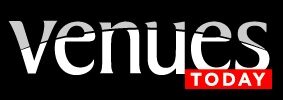Key Takeaways
- Understand your business’s unique payroll and HR requirements.
- Evaluate potential providers based on features, scalability, and support.
- Ensure the chosen solution integrates seamlessly with existing systems.
- Prioritize data security and compliance capabilities.
Table of Contents
- Introduction
- Assess Your Business Needs
- Evaluate Essential Features
- Consider Costs and Pricing Structures
- Check Integration Capabilities
- Prioritize Data Security and Compliance
- Assess Customer Support and Reliability
- Plan for Scalability and Future Growth
- Ensure Smooth Implementation and Training
Choosing an effective payroll and HR solution is a strategic step for small businesses looking to streamline back-office operations, simplify compliance, and drive growth. The right choice can save countless hours, reduce risks, and create smoother employee experiences. This guide offers expert insights into selecting the best provider for your needs, helping you better understand what factors to consider. This payroll prospecting resource is a valuable starting point for those beginning the journey. Understanding your company’s unique requirements and evaluating modern platforms with attention to features, pricing, and support will set the foundation for efficient processes that scale as you grow. This resource will walk you through the essential criteria and proactive strategies for evaluating and adopting the best-fit solution for your business.
Assess Your Business Needs
The process of choosing the right payroll and HR platform starts with a clear evaluation of your company’s particular requirements. Begin by detailing your current headcount, the frequency with which you run payroll, and any specific needs based on your industry compliance standards, such as wage laws, overtime, or sector-specific reporting obligations. Additionally, assess whether you need flexible payment options, support for remote or contract workers, or special benefits administration. These factors help narrow the list to vendors that offer tailored solutions compatible with your workflows and compliance burdens.
Evaluate Essential Features
Modern payroll and HR platforms go well beyond cutting checks. Prioritize systems that provide:
- Automated Payroll Processing: Streamlines calculations and ensures employees are paid accurately and on schedule, reducing costly mistakes.
- Tax Compliance: Automates local, state, and federal tax filings to help prevent penalties from missed deadlines or miscalculations.
- Employee Self-Service Portals: Give your staff easy online access to pay stubs, W-2s, benefit information, and the ability to update personal details independently, saving HR time.
- Time Tracking Integration: Automated timekeeping connected to the payroll system means fewer manual entries and reduced risk of costly time-card errors.
Review this comprehensive guide to ensure you’re considering the latest features and innovations when comparing highly rated payroll providers.
Consider Costs and Pricing Structures
Small businesses must budget carefully, so thoroughly analyze each provider’s pricing structure. Some charge a flat monthly subscription, others a per-employee fee, and some offer a tiered model combining features and scale. Pay attention to any additional costs for year-end tax forms, software updates, or customer support. Ask for a straightforward breakdown of all fees and request clarity on contract length, cancellation policies, and costs for adding or removing features. From a value perspective, weigh the long-term efficiency and compliance benefits against the monthly spend to make an informed comparison.
Check Integration Capabilities
When introducing a new system, a priority should be minimizing manual data entry. Seek out solutions that offer open API integrations or direct sync options with your existing accounting software, ERP platforms, benefits providers, and time-tracking solutions. A well-integrated payroll and HR system reduces the risk of human error, saves administrative hours, and ensures all departments are working with updated and accurate data—key for fast-growing companies that can’t afford operational silos.
Prioritize Data Security and Compliance
Payroll and HR systems store highly sensitive employee information, making robust data security non-negotiable. Ensure your candidate solutions offer features like data encryption (both in transit and at rest), multi-factor authentication, role-based access controls, and regular system audits. Equally important is regulatory compliance. Choose platforms that update proactively as payroll and employment regulations change, both locally and federally, helping you maintain ongoing compliance and avoid legal issues.
Assess Customer Support and Reliability
Responsive customer service is crucial, especially when paydays approach or compliance deadlines loom. Evaluate each provider by their available support channels (chat, phone, email), response times, and access to expert resources. It’s wise to seek out user reviews and testimonials that detail real-world experiences with provider reliability and support, as these are often honest indicators of long-term satisfaction and partnership quality.
Plan for Scalability and Future Growth
Choose a platform that grows with you. The best solutions can easily accommodate higher employee counts, new locations, expanded functionalities, and evolving HR needs without requiring a costly migration down the road. Ask questions about upgrade paths, user or feature limits, and how the system adapts to multi-state or remote teams as your business circumstances change.
Ensure Smooth Implementation and Training
A successful rollout relies on strong onboarding and accessible training resources. Prioritize vendors that offer guidance on migrating data, step-by-step implementation checklists, online training modules, and ongoing user support as your team becomes familiar with the platform.
Look for user-friendly interfaces and customizable dashboards, which will help HR administrators and employees adopt the new system with minimal frustration or downtime. By methodically evaluating these factors and involving key stakeholders, you’ll be in a strong position to select a payroll and HR solution that empowers your team, supports compliance, and aligns with your strategic goals for growth. This investment

